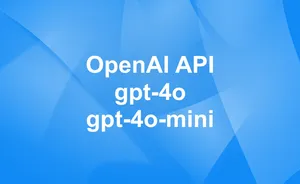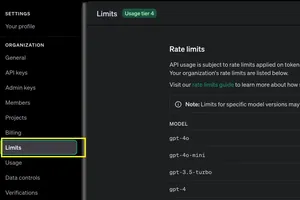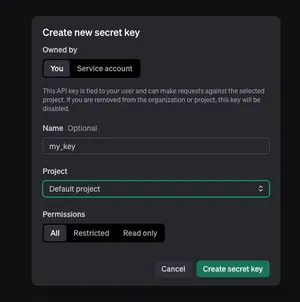Table of Contents
Overview
n8n is a workflow automation tool useful in AI Engineering for orchestrating LLM calls, data pipelines, webhooks, and scheduled tasks. This guide shows how to self-host n8n reliably, from a minimal single-container setup to a production-ready stack with PostgreSQL, Redis, and workers.
Collection: Self-Hosting AI Models & Tools
Quickstart (Minimal, Single Container)
This gets you running locally or on a single VPS fast. It uses SQLite (embedded) and is ideal for testing or small personal setups.
Minimal working example
docker-compose.yml
version: "3.8"
services:
n8n:
image: n8nio/n8n:latest
container_name: n8n
ports:
- "5678:5678"
environment:
- NODE_ENV=production
- GENERIC_TIMEZONE=UTC
- N8N_PORT=5678
- N8N_PROTOCOL=http
- N8N_HOST=localhost
- WEBHOOK_URL=http://localhost:5678/
- N8N_BASIC_AUTH_ACTIVE=true
- N8N_BASIC_AUTH_USER=admin
- N8N_BASIC_AUTH_PASSWORD=change-me
- N8N_ENCRYPTION_KEY=change-this-to-a-long-random-string
volumes:
- n8n_data:/home/node/.n8n
restart: unless-stopped
volumes:
n8n_data:
Steps:
- Save the file as docker-compose.yml.
- Start: docker compose up -d
- Open http://localhost:5678, log in with admin / change-me, and complete the initial setup.
Notes:
- This uses SQLite stored under the n8n_data volume.
- Use strong credentials and a strong 32+ character N8N_ENCRYPTION_KEY.
A tiny “Hello n8n” workflow (importable)
Import this JSON into n8n (Menu → Import from File) and click Execute to see a message.
{
"name": "Hello n8n",
"nodes": [
{
"parameters": {},
"name": "Manual Trigger",
"type": "n8n-nodes-base.manualTrigger",
"typeVersion": 1,
"position": [240, 300]
},
{
"parameters": {
"functionCode": "return [{ json: { message: 'Hello from self-hosted n8n' } }];"
},
"name": "Function",
"type": "n8n-nodes-base.function",
"typeVersion": 2,
"position": [480, 300]
}
],
"connections": {
"Manual Trigger": {
"main": [
[
{ "node": "Function", "type": "main", "index": 0 }
]
]
}
}
}
Production Setup (PostgreSQL + Redis + Workers)
For multi-user, higher reliability, and scaling concurrent executions, use Postgres for the database and Redis for queue-based execution.
docker-compose.yml
version: "3.8"
services:
postgres:
image: postgres:15-alpine
environment:
- POSTGRES_USER=n8n
- POSTGRES_PASSWORD=change-me
- POSTGRES_DB=n8n
volumes:
- postgres_data:/var/lib/postgresql/data
restart: unless-stopped
redis:
image: redis:7-alpine
command: ["redis-server", "--appendonly", "yes"]
volumes:
- redis_data:/data
restart: unless-stopped
n8n-web:
image: n8nio/n8n:latest
depends_on:
- postgres
- redis
environment:
- NODE_ENV=production
- GENERIC_TIMEZONE=UTC
- N8N_PORT=5678
- N8N_PROTOCOL=https
- N8N_HOST=automation.example.com
- WEBHOOK_URL=https://automation.example.com/
- N8N_BASIC_AUTH_ACTIVE=true
- N8N_BASIC_AUTH_USER=admin
- N8N_BASIC_AUTH_PASSWORD=change-me
- N8N_ENCRYPTION_KEY=change-this-to-a-long-random-string
- DB_TYPE=postgresdb
- DB_POSTGRESDB_HOST=postgres
- DB_POSTGRESDB_PORT=5432
- DB_POSTGRESDB_DATABASE=n8n
- DB_POSTGRESDB_USER=n8n
- DB_POSTGRESDB_PASSWORD=change-me
- EXECUTIONS_MODE=queue
- QUEUE_BULL_REDIS_HOST=redis
- QUEUE_BULL_REDIS_PORT=6379
ports:
- "5678:5678"
volumes:
- n8n_data:/home/node/.n8n
restart: unless-stopped
n8n-worker:
image: n8nio/n8n:latest
depends_on:
- postgres
- redis
environment:
- NODE_ENV=production
- GENERIC_TIMEZONE=UTC
- N8N_ENCRYPTION_KEY=change-this-to-a-long-random-string
- DB_TYPE=postgresdb
- DB_POSTGRESDB_HOST=postgres
- DB_POSTGRESDB_PORT=5432
- DB_POSTGRESDB_DATABASE=n8n
- DB_POSTGRESDB_USER=n8n
- DB_POSTGRESDB_PASSWORD=change-me
- EXECUTIONS_MODE=queue
- QUEUE_BULL_REDIS_HOST=redis
- QUEUE_BULL_REDIS_PORT=6379
- N8N_ENABLE_EDITOR_UI=false
command: n8n worker
restart: unless-stopped
volumes:
n8n_data:
postgres_data:
redis_data:
Numbered steps to launch:
- Set a DNS A/AAAA record for automation.example.com to your server.
- Replace credentials, N8N_ENCRYPTION_KEY, and domain in the compose file.
- Start: docker compose up -d
- Put n8n behind your HTTPS reverse proxy and ensure it forwards Host and X-Forwarded-* headers.
- Open https://automation.example.com and finish setup.
Key environment variables (essentials)
- N8N_HOST: Public hostname (no scheme).
- N8N_PORT/N8N_PROTOCOL: Port and scheme n8n listens on.
- WEBHOOK_URL: Public base URL used in webhooks (must match your reverse proxy URL).
- N8N_ENCRYPTION_KEY: Strong secret for credential encryption.
- DB_TYPE: postgresdb for production; default is SQLite if omitted.
- EXECUTIONS_MODE: queue for horizontal scaling with workers.
- QUEUE_BULL_REDIS_HOST/PORT: Redis connection for queue mode.
Operating tips
- Upgrades: docker compose pull && docker compose up -d (always back up first).
- Backups: dump Postgres regularly and snapshot the n8n_data volume.
- Logs: docker compose logs -f n8n-web n8n-worker
- Scale workers: docker compose up -d --scale n8n-worker=3
Performance notes
- Prefer Postgres over SQLite for reliability and concurrency.
- Use EXECUTIONS_MODE=queue with Redis to run workflows on separate workers and scale horizontally.
- For heavy tasks, run multiple workers and tune CPU/RAM accordingly; monitor DB and Redis.
- Consider isolating executions into their own processes (set EXECUTIONS_PROCESS=own) if workflows are memory-heavy; this reduces impact on the main UI/webhook process.
- Reduce logging in production (e.g., set N8N_LOG_LEVEL=warn) to lower I/O overhead.
- Place n8n near your AI/LLM endpoints (same region) to reduce latency.
Common pitfalls
- Missing WEBHOOK_URL or mismatched protocol/host breaks external triggers.
- Using SQLite with multiple replicas or workers risks corruption—use Postgres.
- No persistent volumes means losing credentials and workflows on container removal.
- Weak or reused N8N_ENCRYPTION_KEY compromises stored credentials; rotate safely.
- Reverse proxies that buffer or alter headers can delay or break webhooks; forward Host and X-Forwarded-Proto.
- Large uploads may be blocked by your proxy; raise its request size limit if needed.
Minimal security checklist
- Enable basic auth (already shown) and use strong passwords.
- Restrict access to the admin UI to trusted networks if possible.
- Keep Docker and images updated; patch Postgres and Redis.
- Use HTTPS end-to-end; ensure reverse proxy enforces TLS.
Tiny FAQ
- Can I use an external Postgres/Redis? Yes—point DB_POSTGRESDB_HOST and QUEUE_BULL_REDIS_HOST to those services.
- Do I need Redis if I’m not scaling? No. For single-instance setups, Redis and queue mode are optional.
- Will upgrades cause downtime? A brief restart occurs. Use multiple workers and a reverse proxy for minimal disruption.
- Can n8n run offline? Yes, but nodes that call external APIs (e.g., LLMs) require internet access.
- How do I change the port? Update N8N_PORT and the compose port mapping.
Next steps
- Add authentication for webhooks where appropriate.
- Create environment-specific credentials and use separate databases for staging/production.
- Monitor with container metrics and Postgres/Redis health checks to anticipate bottlenecks.







